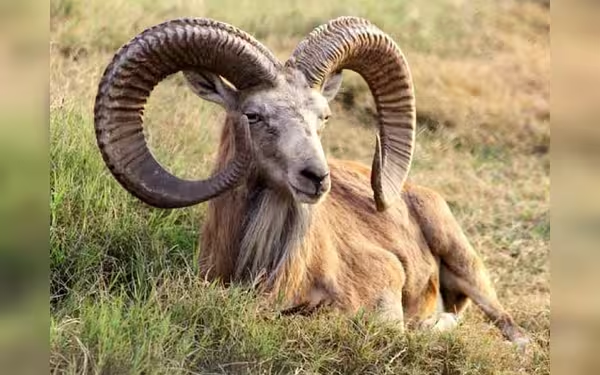Saturday, November 16, 2024 05:35 PM
Urial Trophy Hunting Controversy in Pakistan
- Urial trophy hunting permits issued by Punjab Wildlife Department.
- 80% of proceeds directed to local community organizations.
- Lack of conservancy registration hampers conservation efforts.
 Image Credits: tribune.com.pk
Image Credits: tribune.com.pkThe controversy over urial trophy hunting in Pakistan raises ethical concerns and highlights the need for effective conservation management.
The practice of trophy hunting has long been a topic of heated debate, especially when it comes to the conservation of wildlife. In Pakistan, the urial, a wild sheep species known for its impressive horns and beautiful coat, has become the center of attention. Over the past 12 years, the Punjab Wildlife Department has issued 16 permits for urial trophy hunting. This initiative has reportedly directed around 80 percent of the proceeds to local community-based organizations (CBOs). These organizations are tasked with using the funds for the conservation, protection, and welfare of the urial population.
Despite the Ministry of Climate Change and Environmental Coordination allocating a specific quota for urial trophy hunting, the practice has not gained momentum. The primary reason for this stagnation is the non-registration of Community-Based Conservancies (CBCs). These conservancies are part of a new model that aims to establish 20 zones specifically tailored to the habitats of the urial. Without the proper registration of these conservancies, the potential benefits of trophy hunting for conservation efforts remain untapped.
Supporters of trophy hunting argue that it can provide essential funding for conservation efforts and help local communities benefit from wildlife. They believe that when communities see a financial incentive in protecting wildlife, they are more likely to engage in conservation practices. However, critics raise concerns about the ethical implications of hunting animals for sport, questioning whether the financial benefits truly outweigh the moral costs.
As the debate continues, it is crucial to consider the broader implications of trophy hunting on wildlife conservation. While the funds generated from such activities can support local communities and conservation efforts, the lack of proper management and registration of conservancies poses a significant challenge. It is essential for the government and relevant authorities to address these issues to ensure that the urial population is not only protected but also thrives in its natural habitat.
The controversy surrounding urial trophy hunting highlights the complex relationship between wildlife conservation and local community involvement. As stakeholders navigate this intricate landscape, it is vital to strike a balance that respects both the needs of local communities and the rights of wildlife. Only through thoughtful dialogue and effective management can we hope to find a sustainable path forward for the urial and other endangered species in Pakistan.













